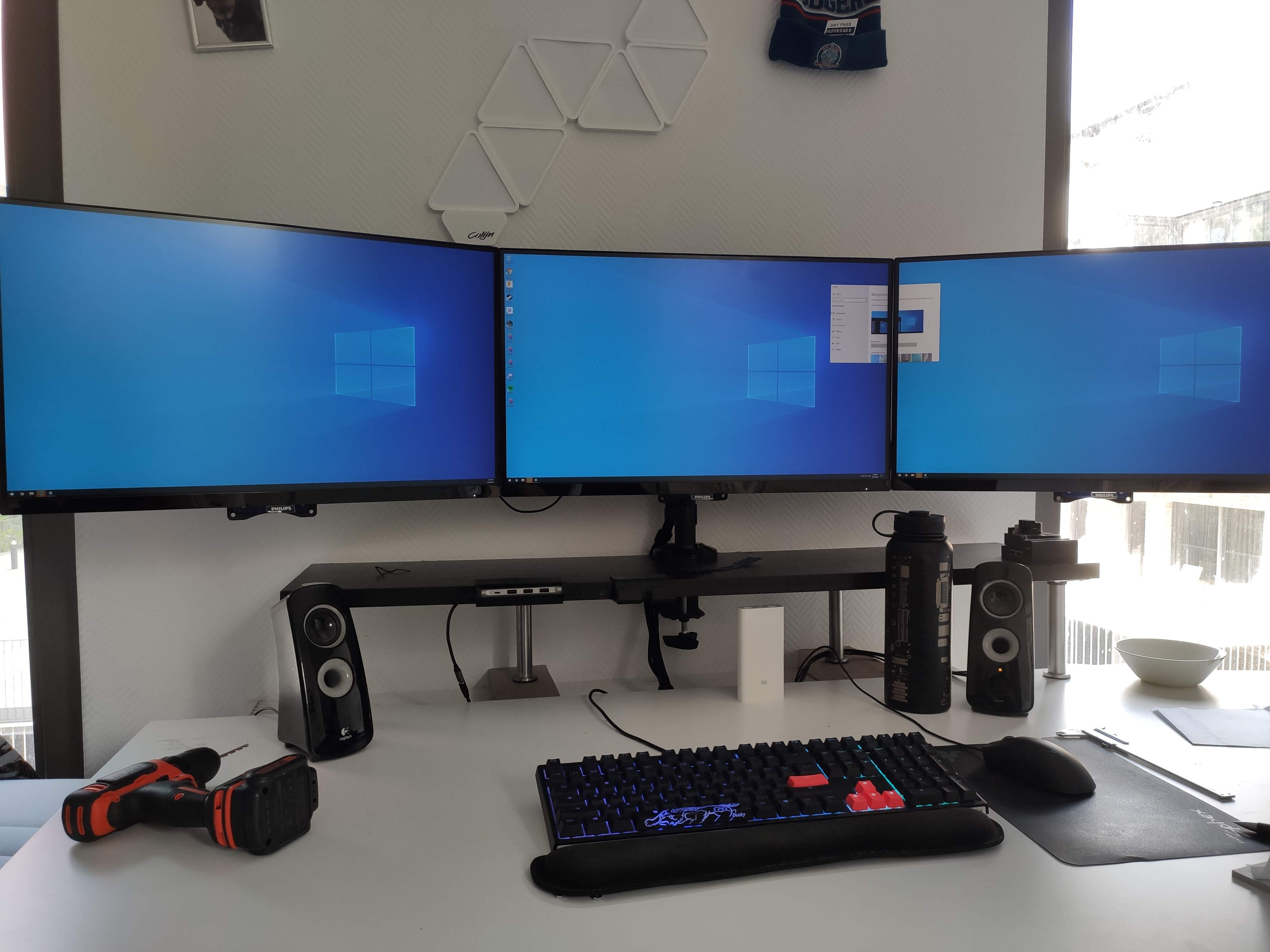
Philips Monitor VESA Adapter
prusaprinters
<p>This is a VESA mount for Philips monitors that do not come equipped with one and have the stand attached internally.</p> <p>The screen I designed this for is the 276E8VJSB, but it might also work on others of similar design!</p> <h3>Print instructions</h3><p>The instructions are written with the pictures in mind. Because it is slightly different for every screen I have only included generic options for the monitor I had.</p> <p><strong>Required Parts</strong></p> <p>1x M6x60 Hex Bolt<br/> 1x M3x50 Bolt<br/> 7x M6 Nut<br/> 6x M6 Spring washer (or similar to add friction)<br/> 6x M4 Nut<br/> 2x M4x30 Bolt (Can't have a very tall head)</p> <p><strong>Printing</strong></p> <p>Print the parts with at least 40% infill for added rigidity. The small block is designed to be printed on its side such that the closed up M6 hole is near the bed. This will allow for the overhang of the pocket to print nicely and this is the strongest orientation of the part.</p> <p>The backplate needs to be printed with the four M4 nut traps away from the bed.</p> <p><strong>Disassembly</strong> (Picture 4)</p> <p>Disassemble the monitor by removing all the screws that are visible, check underneath stickers etc. for hidden screws, then pop the back off by pulling on the plastic clips.</p> <p>Internally you will see a metal block consisting of two parts attaching to the monitor. Remove the six screws holding it to the monitor base and carefully remove the base.</p> <p>Undo the M6 Locknuts and remove all the washers holding the original stand on. (See picture 4) Then undo the single small screw in the bottom (Visible in picture 8) to take the two halves apart and remove the stand.</p> <p><strong>Assembly</strong></p> <p>Take the small block and insert M4 nuts into the M4 nut traps (can be a bit tight) and M6 nuts into the M6 nut traps. (Pictures 5 and 6) <em>Make sure that the M4 bolts can go through the nuts in the nut trap, you will not have access to them later</em></p> <p>Then grab one of the two halves and create the stack visible in picture 6. Do not tighten the bolts yet. Pay attention to the orientation of the M3 hole in the block, it needs to align with the larger slit in the metal part.</p> <p>The stack onto the M6 bolt is:<br/> Bolt - Spring Washer - Metal Part - Spring Washer - Nut - Nut - Spring Washer - Printed block with nuts - Spring Washer - Nut - Nut - Spring Washer - Metal Part - Spring Washer - Nut</p> <p>Finally insert the M3x50 bolt all the way through (as visible in picture)</p> <p>This is the moment to start adjusting the horizontal position of the plastic block until it is nicely centered. Use the back of the monitor to get the exact position right. When in the right location start tightening all the nuts such that everything is very locked up. The tighter the better. During the process of tightening the nuts, keep checking if the bracket still fits into the back of the monitor.</p> <p>When done screw the bracket back into the monitor and reassemble. (Picture 9)</p> <p>Finally use the M4x30 bolts to bolt the backplane on.</p> <p>The monitor is now VESA ready, the steps from here on out depend on your specific VESA mount.</p>
With this file you will be able to print Philips Monitor VESA Adapter with your 3D printer. Click on the button and save the file on your computer to work, edit or customize your design. You can also find more 3D designs for printers on Philips Monitor VESA Adapter.
